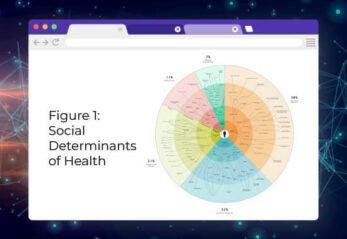In order to prevent hacks in advance, one cannot rely on a singular piece of software – a cyber defense is needed.
Layers of protection positioned throughout the network are necessary just as a secure building has a fence, locks on the doors, and a safe for valuables. Think of threat intelligence as a security system that could correlate attempts to climb the fence and queries from nosy strangers to faces on the security camera. Directed malware attacks are preceded by other exploratory behaviors such as sending pings, running port scans, and probing for back doors. A threat intelligence platform clued into all of these different events can connect the dots and correlate these individual happenings to a singular recon campaign.
Security applications which rely on definitions work for certain types of known attacks. That is unless they’re too new to have been identified and resolved. Zero-day malware applications are just unique enough to evade existing protections and easier than ever to produce.
Security platforms use algorithms to compare the users’ traffic logs to known signs of suspicious or outright malicious behavior. As these volumes of IPs to blacklist and other profiles of implicating patterns continually grow, the analysis becomes a bigger job. A few alternate data-synthesis models have been established – the reference file can be downloaded to the user’s application locally, or user logs can be encrypted and transmitted to a vendor’s processors to be studied for Indicators of Compromise.
Benefit from others’ experience by sharing intelligence. You’ll have a more successful intelligence program if you cooperate with others in your same position as potential hacking victims. A threat intelligence platform that uses open source threat feeds can supplement the industry-specific feeds that larger organizations are adopting. Send and receive shared intelligence in order to have a comprehensive reference against which to compare your own logs. Password or other authentication cracks can leave you open to an instant crisis. The vulnerability can be as simple as a weak password or log-ins from insecure locations such as an employee’s home or hotel wifi network. Authentication cracks can also occur with social engineering – tricky messages which are very effective despite repeated education efforts. The security team doesn’t need to be apprised of every password reset, nor should they. The system must be able to recognize suspicious source locations, excessive failed login attempts, or an oddly-timed password reset indicative of a hack.
Your cyber security configuration has got to use a honeypot/honeynet. They are useful for collecting info about threats and can mitigate the damage of a successful hack. A honeypot is a deception trap which hackers are permitted to find; their value lies in how they are then exploited. Depending on their location and individual makeup they may work as a space where hackers incriminate themselves and reveal clues to their identities. Placing decoy files with different types of filenames can help determine what kinds of data the hackers are after. Other honeypots are sandbox environments in which packets can be deployed without causing any real damage. Even if they only work to waste a hacker’s time, a honeypot is an important part of the intelligence toolkit. Keeping hackers from attacking your network is a lofty goal. It is still possible to stop many attacks before they are fully executed. The sooner you start setting up and customizing your threat intelligence platform, the sooner you’ll be apprised of the threats lurking out there.






























